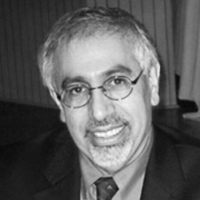Question
Explain positional nystagmus (as opposed to positioning nystagmus)--how can we explain a peripheral mechanism which is non-fatiguing, and may even be in different directions in different positions?
Answer
The terms positional and positioning tests are older terminologies that are better described by the terms static and dynamic position tests, respectively. In static position testing we look for persistent nystagmus that is present as long as the head remains in the critical position whereas in dynamic position testing, we look for transient nystagmus that is provoked by moving the head to the critical position.
Any type of nystagmus in static position testing that is present with fixation or nystagmus that changes direction in a single head position indicates a central lesion. This question refers to horizontal nystagmus that is present without fixation in different head positions (vertical nystagmus without fixation is a whole different topic that has to be addressed separately). The nystagmus may change intensity and even direction in different head positions. For example, nystagmus that beats in one direction in sitting and supine positions may become geotropic (rightbeating in head right and leftbeating in head left positions) or ageotropic (leftbeating in head right and rightbeating in head left positions) when head is turned right or left from the supine position.
We know that asymmetries in the vestibulo-ocular reflex pathways, such as those caused by the loss of labyrinthine function in one ear, generate persistent unidirectional nystagmus that beats away from the side of lesion during the acute phase of the lesion. So it would seem that a peripheral lesion could not cause any nystagmus that changes direction in different head positions. This was the accepted view in the early days, which turns out to be incorrect!
An example of a peripheral vestibular process that can generate direction-changing nystagmus in different head positions is positional alcohol nystagmus (PAN). After ingesting alcohol, alcohol enters the cupula before it enters the endolymph, thus making the cupula lighter than the surrounding endolymph. Conversely, alcohol leaves the cupula before it leaves the endolymph making the cupula heavier than the surrounding endolymph. As a result, a person who ingests sufficient amount of alcohol will have geotropic nystagmus 2 hours later. The nystagmus becomes ageotropic about 12 hours after ingesting alcohol. Similar results can be seen in patients after ingesting "heavy water" or glycerol.
So it is possible for certain metabolic disorders to change the chemical composition and specific gravity of the cupula or endolymph and cause direction-changing nystagmus in head right and left positions. There is another possibility. The afferent neural pathways from the semicircular canals eventually merge with the neural pathways from the utricle and saccule to form the vestibular portion of the eighth nerve. Although the semicircular canals themselves are not sensitive to the direction of gravity, their neural output can be modulated by the head position through the shared neural pathways with the otolith organs.
In general, horizontal nystagmus without fixation is seen in healthy individuals with no history of any balance disorders and in patients with a variety of disorders. The nystagmus has to be greater than 6 degrees per second in at least one head position before it is considered abnormal. When abnormal, static position nystagmus and all of its variations including spontaneous, geotropic, and ageotropic nystagmus, are considered non-localizing findings that can originate from the labyrinth, vestibular nerve, or central vestibular pathways.
Kamran Barin is the Director of the Balance Disorders Clinic at the Ohio State University, Department of Otolaryngology. He has taught national, international, and graduate level courses in vestibular function testing since 1983.

